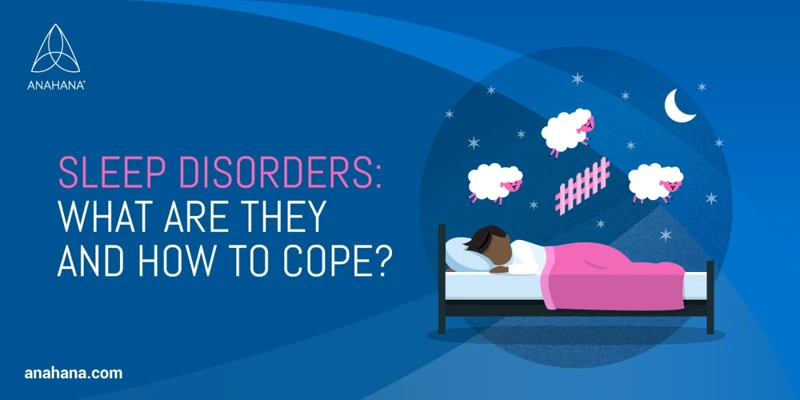As we drift into sleep, our minds enter into a mystical world of dreams, which sometimes can be unsettling. However, for individuals with REM Sleep Behavior Disorder (RBD), this dream world can become a physical and emotional nightmare. RBD is a condition that causes people to act out their dreams, leading to possible injury and severe sleep disruption. The symptoms of RBD can be alarming, and understanding the disorder’s causes and treatments can be overwhelming. This article will unlock the mysteries of dreaming and explore the common symptoms, causes, diagnosis, and treatment options available for individuals struggling with REM Sleep Behavior Disorder.
What is REM Sleep Behavior Disorder?
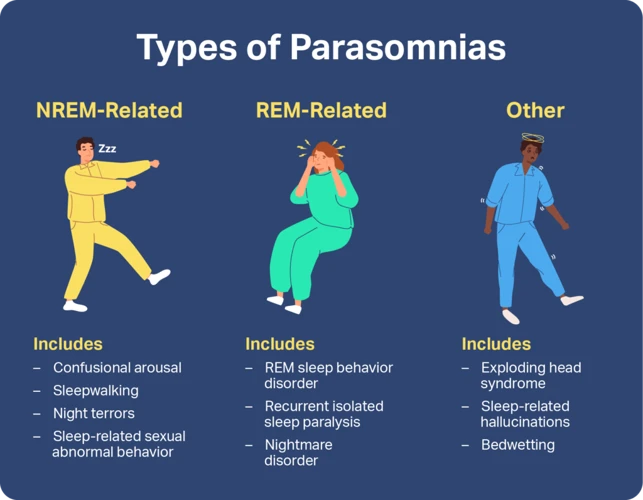
When we fall asleep, we expect our bodies to be still and calm throughout the night. However, for some people, this is not the case. There is a mysterious sleep disorder called REM Sleep Behavior Disorder that causes individuals to engage in physical activity during their sleep. This disorder is puzzling because it is not yet fully understood by medical professionals, and its exact causes are unknown. Let’s delve deeper into the basics of this perplexing disorder and learn more about how it affects sleep.
The Basics of REM Sleep Behavior Disorder
During REM sleep, which stands for Rapid Eye Movement sleep, the brain sends signals to the body to cause paralysis of muscles, also known as atonia. This is to prevent you from acting out your dreams. However, individuals with REM Sleep Behavior Disorder (RBD) lack this muscle paralysis, causing them to physically and sometimes violently act out their dreams.
RBD can affect:
- Men more often than women
- Individuals over the age of 50, although it can occur at any age
- People with certain neurological conditions such as Parkinson’s disease
Some key features of RBD include:
- Vocalizations or screaming during sleep
- Violent movements, such as punching or kicking, during sleep
- Injuries to oneself or a sleeping partner
- Vivid and intense dreams
- Increased movement during sleep
- Increased heart rate and blood pressure during episodes
If you or someone you know experiences any of these symptoms or have concerns about RBD, it’s important to consult a healthcare professional for proper diagnosis and treatment.
How it Affects Sleep
During Rapid Eye Movement (REM) sleep, the body is usually paralyzed to prevent physical movements that may harm the individual, but people with REM Sleep Behavior Disorder (RBD) do not experience this lack of muscle tone. Instead, their physical movements during dreams can become so intense that they cause disruptions in sleep.
Impaired Sleep Quality: RBD can impair the quality of sleep because the individual is more likely to wake up frequently during the night due to physical movements. This can lead to fatigue, grogginess, and a lack of concentration during the day.
Increased Risk of Injury: As people with RBD move around during their dreams, there is an increased risk of injury to themselves or their sleeping partners. In some cases, the injuries can be serious enough to require medical attention.
Disruptive to Sleeping Partners: RBD can be disruptive to sleeping partners due to the physical movements, noises, and even violent behaviors exhibited during sleep. This can cause strain on relationships and even lead to separate sleeping arrangements.
Psychological Distress: People with RBD may experience psychological distress due to the violent dreams and physical movements that they cannot control. This can result in anxiety, depression, and other emotional problems.
Increased Risk of Developing Parkinson’s Disease: Studies have shown that individuals with RBD are at an increased risk of developing Parkinson’s disease or other related disorders later in life. This highlights the importance of seeking medical attention if symptoms of RBD persist.
| Effects of RBD on Sleep | Description |
|---|---|
| Impaired Sleep Quality | RBD can impair the quality of sleep because the individual is more likely to wake up frequently during the night due to physical movements. |
| Increased Risk of Injury | As people with RBD move around during their dreams, there is an increased risk of injury to themselves or their sleeping partners. |
| Disruptive to Sleeping Partners | RBD can be disruptive to sleeping partners due to the physical movements, noises, and even violent behaviors exhibited during sleep. |
| Psychological Distress | People with RBD may experience psychological distress due to the violent dreams and physical movements that they cannot control. |
| Increased Risk of Developing Parkinson’s Disease | Studies have shown that individuals with RBD are at an increased risk of developing Parkinson’s disease or other related disorders later in life. |
Common Symptoms of REM Sleep Behavior Disorder
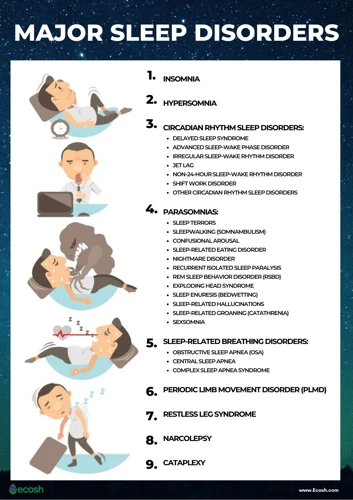
For those who suffer from REM Sleep Behavior Disorder (RBD), common symptoms can be alarming and disruptive to daily life. This disorder causes individuals to physically act out their dreams during the rapid eye movement (REM) stage of sleep, leading to potential injury of themselves or their sleep partner. It is important to understand the physical and emotional symptoms associated with RBD in order to seek proper diagnosis and treatment. Let’s take a closer look at some of the telltale signs that may indicate the presence of this disorder.
Physical Symptoms
Physical symptoms of REM Sleep Behavior Disorder are one of the most noticeable aspects of the condition. These symptoms occur during the REM stage of sleep when the brain is most active, and the body is usually in a state of paralysis. However, in people with this disorder, the opposite occurs, and the following physical symptoms can occur:
| Physical Symptoms | Description |
| Muscle Twitches | Abnormal and sudden movements of the muscles, which can cause the person to hit or punch someone sleeping next to them |
| Jerky Movements | Rapid and unpredictable movements, such as flailing arms or legs, that can cause injury to oneself or others |
| Speaking or Screaming | Talking or shouting during sleep, which can be nonsensical or appear as if the person is in distress |
| Thrashing or Kicking | Violent movements that can cause bedding to become disturbed or even thrown off the bed altogether |
| Walking or Running | Getting out of bed and moving around while still asleep, which can cause injury or accidents |
| Aggression | Uncharacteristically aggressive behavior, which can also lead to injury |
These physical symptoms can be very alarming and disruptive to the person with REM Sleep Behavior Disorder, as well as to anyone sharing a bed or room with them. It is important to note that these symptoms are not intentional, and the person is not aware of their actions during sleep. Seeking diagnosis and treatment is essential for managing the disorder and preventing injury.
Emotional Symptoms
People with REM Sleep Behavior Disorder may experience a variety of emotional symptoms alongside their physical symptoms. These can include:
- Anxiety: Feelings of unease or nervousness can be common in those with REM Sleep Behavior Disorder, especially if they have injured themselves or their bed partner during a sleep episode.
- Fear: Fear can be another common emotional symptom, as those with the disorder may experience vivid and frightening dreams that they act out physically.
- Embarrassment: Embarrassment can arise if the individual has hurt themselves or their bed partner during a dream-enactment episode or has engaged in inappropriate behavior while asleep.
- Depression: The fear of injuring themselves or their bed partner, as well as the disruption to their sleep, can lead to feelings of depression.
It is important for those experiencing these emotional symptoms to seek help from a medical professional. A doctor can assess the individual’s symptoms and provide appropriate treatment, such as therapy or medication, to help manage any anxiety or depression. It is also important for individuals with REM Sleep Behavior Disorder to educate their family members or bed partner about the disorder, as understanding and support from loved ones can help alleviate some of the emotional stress associated with the disorder.
Causes of REM Sleep Behavior Disorder
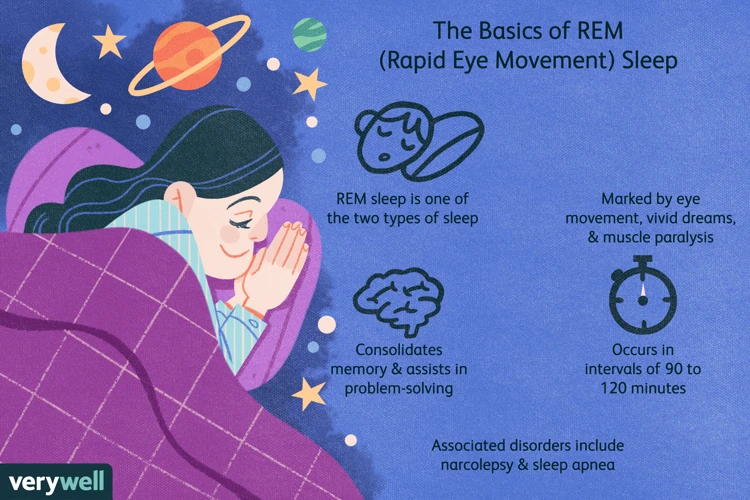
As with many sleep disorders, scientists and doctors are still trying to fully understand the underlying causes of REM Sleep Behavior Disorder. The disorder itself is not fully understood, which can make determining its causes all the more difficult. However, through research and observation, possible causes have been identified. This section will explore some of the leading theories behind the causes of REM Sleep Behavior Disorder, including both neurological causes and medication or substance use causes.
Neurological Causes
There are various neurological causes that can lead to REM Sleep Behavior Disorder (RBD). It occurs when there is a lack of muscle atonia or paralysis during REM sleep. Here are some potential neurological causes of RBD:
- Neurodegenerative conditions: RBD has been found to be a common precursor to neurodegenerative conditions such as Parkinson’s disease, multiple system atrophy, and dementia with Lewy bodies.
- Brainstem lesions: Damage to the part of the brainstem responsible for regulating REM sleep can lead to disrupted muscle atonia during this stage of sleep, causing RBD. Brainstem lesions can occur due to strokes, traumatic brain injuries, or tumors.
- Genetic factors: Some cases of RBD have been found to run in families, suggesting a genetic component to the disorder. Studies have identified genetic mutations that increase the risk of developing RBD.
- Other disorders: Some neurological disorders such as narcolepsy, epilepsy, and Tourette syndrome can also lead to RBD.
It’s important to note that not all cases of RBD are caused by neurological factors. It can also occur due to medication or substance use or other underlying medical conditions. A proper diagnosis is essential in determining the cause of RBD and developing an appropriate treatment plan.
Medication or Substance Use Causes
A less common cause of REM Sleep Behavior Disorder is the use of certain medications or substances which affect the brain’s chemistry. These substances can impact the way the brain controls muscle movement during sleep, leading to the development of REM Sleep Behavior Disorder.
Some of the medications and substances that have been associated with this disorder include:
| Medications | Substances |
|---|---|
| Tricyclic antidepressants | Alcohol |
| Serotonin-norepinephrine reuptake inhibitors (SNRIs) | Antipsychotics |
| Antihistamines | Withdrawal from drugs or alcohol |
| Selective serotonin reuptake inhibitors (SSRIs) | |
| Beta blockers |
It’s important to note that not all individuals who use these medications and substances will develop REM Sleep Behavior Disorder. However, individuals who have a history of this disorder in their family or who have previously experienced symptoms of this disorder may be at a higher risk for developing it when using these substances. If you are concerned about the impact that certain medications or substances may have on your sleep, speak with your healthcare provider. They can provide you with information on alternative medications or substances if necessary.
Diagnosis of REM Sleep Behavior Disorder
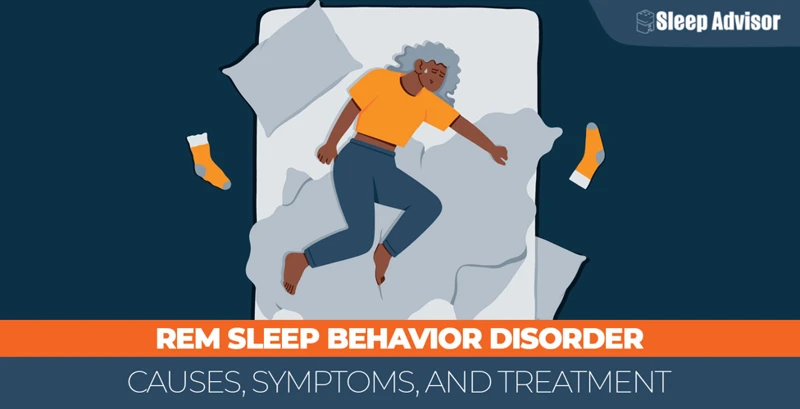
One of the most challenging aspects of dealing with REM Sleep Behavior Disorder is diagnosing the disorder. Due to its many symptoms, it can be difficult to determine whether or not someone is truly suffering from this disorder. Nonetheless, doctors have developed a series of medical procedures and tests that can help diagnose REM Sleep Behavior Disorder accurately. These tests range from simple bed-side examinations to medical imaging scans, known as polysomnography. In this section, we will examine some of the most common ways that doctors test for this disorder, so that you can be prepared if a doctor suggests you have this condition.
Medical History and Physical Examination
During the diagnosis of REM Sleep Behavior Disorder, a medical history and physical examination are important steps in identifying potential causes and ruling out other sleep disorders. This process involves a detailed evaluation of the patient’s medical history and current symptoms by a healthcare professional. Here are some key elements of the medical history and physical examination:
| Medical History | Physical Examination |
| The patient’s sleep patterns and habits | Assessment of the patient’s muscle tone and movements |
| The patient’s medications and any substance use | Assessment of the patient’s cognitive function |
| The patient’s mental health history | Assessment of the patient’s sensory function |
| The patient’s family medical history | Assessment of the patient’s reflexes and coordination |
The medical history component involves gathering information about the patient’s sleep patterns and habits, any medications they may be taking, and any relevant medical or mental health history. This helps the healthcare professional identify potential causes or underlying conditions that may be contributing to the patient’s symptoms.
During the physical examination, the healthcare professional will assess the patient’s muscle tone, movements, cognitive function, sensory function, reflexes, and coordination. This helps to identify any physical causes or motor abnormalities that may be causing the patient’s symptoms.
The medical history and physical examination play a crucial role in diagnosing REM Sleep Behavior Disorder and distinguishing it from other sleep disorders. By identifying potential causes and ruling out other conditions, healthcare professionals can develop a more effective treatment plan for patients.
Polysomnography and Other Tests
One of the ways in which doctors can diagnose REM Sleep Behavior Disorder is through the use of polysomnography and other tests.
Polysomnography is a test which measures and records a variety of bodily functions during sleep, including brain activity, eye movement, heart rate, blood pressure, and oxygen levels. This information is used to determine the stage of sleep that the patient is in and whether there are any abnormalities present.
Other tests which may be performed include a video polysomnography, which combines the use of polysomnography with video recordings of the patient during sleep to allow for a more thorough analysis of their movements; and an actigraphy, which involves wearing a device on the wrist that measures movement and can help identify patterns in the patient’s sleep behavior.
In addition to these tests, doctors may also conduct a neurological examination to check for any underlying neurological conditions that may be causing the patient’s symptoms. Blood tests may also be performed to rule out any potential medication or substance-related causes of the disorder.
A combination of these tests can help doctors determine whether a patient is suffering from REM Sleep Behavior Disorder and develop an appropriate treatment plan.
| Tests Mentioned | What It Involves |
|---|---|
| Polysomnography | Measures and records brain activity, eye movement, heart rate, blood pressure, and oxygen levels during sleep |
| Video Polysomnography | Combines polysomnography with video recordings of the patient during sleep to allow for a more thorough analysis of their movements |
| Actigraphy | Involves wearing a device on the wrist that measures movement and can help identify patterns in the patient’s sleep behavior |
| Neurological Examination | Checks for any underlying neurological conditions that may be causing the patient’s symptoms |
| Blood Tests | Performed to rule out any potential medication or substance-related causes of the disorder |
Treatment for REM Sleep Behavior Disorder
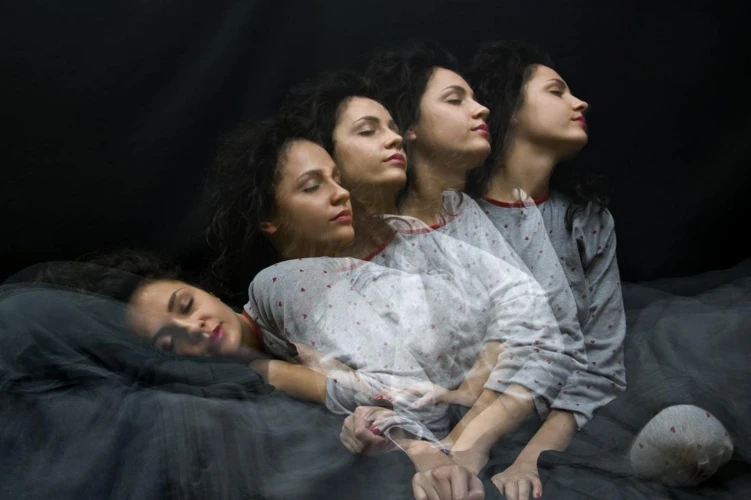
Finding an effective treatment for REM Sleep Behavior Disorder can be a perplexing journey. Due to the complexity of the neurological causes, medication or substance use causes, and individual differences in symptoms, treatment approaches can vary greatly from person to person. However, there are several methods that have shown promise in managing symptoms and improving quality of life for those with this disorder. In this section, we will explore some of the most common treatment options, including lifestyle changes, medication, and sleep environment modifications. Let’s dive in with an open mindset and discover what can make a difference in managing this disorder.
Lifestyle Changes
To manage REM Sleep Behavior Disorder, lifestyle changes are essential. These changes can help improve sleep quality and reduce the frequency and severity of symptoms. Here are some lifestyle changes that can help:
| Change | Description |
| Reduce Stress | Stress is a significant trigger for RBD symptoms. Practicing relaxation techniques such as deep breathing, meditation, yoga, or tai chi can help reduce stress and promote relaxation. |
| Avoid Alcohol and Sedatives | Alcohol and sedatives can worsen RBD symptoms. Avoid consuming them at least 4-6 hours before bedtime. |
| Exercise Regularly | Regular exercise helps in reducing stress and promoting better sleep. However, avoid strenuous exercises before bedtime as it can trigger symptoms. |
| Create a Sleep-Conducive Environment | Your sleeping environment should be dark, quiet, cool, and comfortable. Use curtains or blinds to block out light, use earplugs or white noise machines to mask noise, and keep the room temperature between 60 to 67 degrees Fahrenheit. |
| Establish a Sleep Schedule | Establishing a consistent sleep schedule can help regulate your body’s circadian rhythms, which can help improve the quality of your sleep. Aim to go to bed and wake up at the same time every day. |
| Relax Before Bedtime | Engage in relaxing activities such as reading a book, listening to music or taking a warm bath to help you unwind before bed. |
By making these lifestyle changes, you can improve your quality of sleep and reduce the severity of REM Sleep Behavior Disorder symptoms.
Medications
When it comes to treating REM Sleep Behavior Disorder, there are several medications that can be prescribed by a healthcare provider. These medications work to suppress muscle activity during sleep and reduce the likelihood of acting out dreams. Let’s take a closer look at some of the medications often prescribed for RBD:
| Medication | How it Works | Common Side Effects |
|---|---|---|
| Clonazepam | Works by suppressing muscle activity during sleep. | Drowsiness, falls, cognitive impairment, mood changes. |
| Melatonin | Regulates sleep and wake cycles, and can help promote better sleep. | Dizziness, daytime sleepiness, headache, nausea. |
| Antidepressants | Can help regulate mood and improve sleep quality. | Drowsiness, weight gain, constipation, dry mouth. |
It’s important to note that these medications should only be taken under the guidance of a healthcare provider, and that they may not be effective for everyone. Additionally, they can have side effects that may impact daily activities. It’s important to discuss potential side effects with a doctor before beginning any medication for RBD.
Sleep Environment Modifications
Making modifications to your sleep environment can significantly improve symptoms of REM Sleep Behavior Disorder. Here are some sleep environment modifications that can help:
- Remove distractions: Remove anything from your sleeping area that could possibly distract you, such as televisions or screens. This will ensure that your mind is at ease and not stimulated during your sleep time.
- Adjust the lighting: Make sure to keep your room dark and shielded from external light sources. You can also try using a dim night light to help you see your way around the room if you need to get up during the night.
- Reduce noise: Use earplugs or white noise machines to prevent outside noise from disturbing your sleep. This will allow you to have a more peaceful and restful sleep.
- Improve comfort: Ensure that your mattress, pillows, and bedding are comfortable and supportive. This will prevent you from tossing and turning during the night and will help you stay in one position.
- Stabilize the temperature: Maintain neutral temperatures in your bedroom, as extreme temperatures can disturb your sleep. Ensure your room is cool enough for you to sleep comfortably, but not too cold.
Making these changes to your sleep environment can help you get a better night’s rest and reduce the symptoms of REM Sleep Behavior Disorder. It’s important to remember that everyone’s preferences and needs are different, so finding the right combination of modifications may take some trial and error.
Tips for Managing REM Sleep Behavior Disorder
After being diagnosed with REM Sleep Behavior Disorder (RBD), it can be overwhelming to adjust to the new reality of a disrupted sleep pattern. However, with a few lifestyle changes, it’s possible to manage the symptoms of RBD and improve the quality of your sleep. In this section, we will explore some helpful tips for managing RBD and achieving a restful night’s sleep. Let’s dive in and see how these small changes can make a big difference in managing RBD.
Establish a Sleep Schedule
Creating and sticking to a consistent sleep schedule is an essential component of managing REM Sleep Behavior Disorder. A sleep schedule ensures that your body’s internal clock is in sync with your daily activities, making it easier to fall asleep and stay asleep throughout the night. Below are some helpful tips for establishing and maintaining a regular sleep pattern:
| Tip | Description |
| Stick to a Routine | Go to bed and wake up at the same time every day, even on weekends or days off. |
| Avoid Napping | Avoid daytime napping if possible, or keep naps short (less than 30 minutes). |
| Be Aware of Your Sleep Needs | Each person has different sleep needs. Determine how much sleep you need to feel rested and adjust your schedule accordingly. |
| Gradually Adjust Your Schedule | If you need to change your sleep schedule, do it gradually (over several days) to allow your body to adjust. |
| Avoid Late Night Stimulants | Avoid caffeine, nicotine, and alcohol before bedtime, as they can disrupt sleep. |
| Relax Before Bedtime | Establish a relaxing bedtime routine, such as reading a book, taking a warm bath, or listening to calming music. |
By establishing a consistent sleep schedule and following the tips above, you can improve your sleep quality and reduce the likelihood of experiencing symptoms associated with REM Sleep Behavior Disorder. It may take time to establish a regular sleep pattern, but the benefits are well worth the effort.
Create a Calming Bedtime Routine
Setting up a calming bedtime routine can be helpful for those who suffer from REM Sleep Behavior Disorder. Here are some tips to create a bedtime routine that promotes relaxation and better sleep:
- Avoid Stimulants: Eliminate caffeine intake at least six hours before bedtime. Also, avoid nicotine and alcohol as they can disturb sleep patterns.
- Relaxation Techniques: Incorporate relaxation techniques into your bedtime routine. This could include listening to calming music, deep breathing exercises, or meditation.
- Dim the Lights: Bright lights can interfere with your body’s natural sleep rhythms. Consider dimming the lights in your bedroom about 30 minutes before bedtime to help signal to your body that it’s time to sleep.
- Limit Screen Time: The blue light emitted by electronic devices can suppress the release of melatonin, a hormone needed for sleep. Turn off all electronics at least an hour before bedtime to give your brain time to wind down.
- Take a Warm Bath: Taking a warm bath before bedtime can help relax your muscles and calm your mind. Adding Epsom salts to the bathwater can also help relieve muscle tension and promote relaxation.
By incorporating these tips into your bedtime routine, you may find that you fall asleep more easily and experience a more restful night’s sleep. Remember that everyone’s routine will be different, so it’s important to find what works best for you.
Remove Obstacles in the Sleeping Area
One important aspect of managing REM Sleep Behavior Disorder is making changes to your sleeping environment. One thing you can do to help reduce the risk of injury is to remove any obstacles from your sleeping area. This can be particularly helpful for people who experience physical symptoms during sleep, such as flailing limbs or jumping out of bed.
Here are some ways you can remove obstacles from your sleeping area:
- Clear the space around your bed – make sure there is enough room for you to move around freely without risking injury.
- Remove any furniture that is not necessary – extra furniture can clutter your space and increase the risk of tripping.
- Get rid of loose rugs or other tripping hazards – anything on the floor that could cause you to slip or trip should be removed.
- Ensure your bed is stable and secure – make sure your bed is sturdy and won’t move around while you are sleeping.
- Install safety rails – for people with particularly severe symptoms, installing safety rails on the bed can help prevent falls.
By removing obstacles in your sleeping area, you can help create a safer sleep environment and decrease the risk of injury. However, it’s important to note that while these changes can be beneficial, they may not entirely eliminate the risk of symptoms or injury. It’s still important to follow other tips for managing REM Sleep Behavior Disorder and to work closely with your healthcare provider to find the best course of treatment for you.
Conclusion
After exploring the world of REM Sleep Behavior Disorder, it is clear that this sleep disorder can greatly impact an individual’s physical and emotional well-being. Those who suffer from REM Sleep Behavior Disorder experience a range of symptoms, including physical movements and emotional distress.
There are a variety of causes that can result in REM Sleep Behavior Disorder, ranging from neurological causes to medication or substance use causes. To accurately diagnose REM Sleep Behavior Disorder, medical professionals may conduct medical history and physical examinations, as well as polysomnography and other tests.
Fortunately, there are a number of treatment options available to those who suffer from REM Sleep Behavior Disorder. Lifestyle changes, medications, and modifications to the sleeping environment can all play a role in managing this sleep disorder.
For those who suffer from REM Sleep Behavior Disorder, managing the condition can be a challenge. However, by establishing a consistent sleep schedule, creating a calming bedtime routine, and removing obstacles in the sleeping area, individuals can help mitigate the symptoms of this disorder and get a better night’s sleep.
In conclusion, REM Sleep Behavior Disorder is a complex condition that can have a significant impact on those who suffer from it. However, with the proper diagnosis and treatment, individuals can successfully manage the symptoms of this disorder and improve their overall quality of life.
Frequently Asked Questions
What are the physical symptoms of REM Sleep Behavior Disorder?
Physical symptoms may include muscle twitching, kicking or punching during sleep, and flailing movements.
Can REM Sleep Behavior Disorder cause injury?
Yes, those with REM Sleep Behavior Disorder may unknowingly injure themselves or their partner during sleep.
Is REM Sleep Behavior Disorder treatable?
Yes, there are various treatments available including lifestyle changes, medication, and sleep environment modifications.
What is the difference between REM Sleep Behavior Disorder and sleepwalking?
Sleepwalking occurs during non-REM sleep, while REM Sleep Behavior Disorder occurs during the REM sleep stage.
What medications can cause REM Sleep Behavior Disorder?
Some antidepressants and medications used to treat Parkinson’s disease have been linked to the development of REM Sleep Behavior Disorder.
Can REM Sleep Behavior Disorder be cured?
It can be managed with the appropriate treatments, but currently there is no known cure for REM Sleep Behavior Disorder.
Can stress contribute to the development of REM Sleep Behavior Disorder?
Stress is not known to directly cause REM Sleep Behavior Disorder, but it can worsen symptoms.
Is REM Sleep Behavior Disorder more common in men or women?
It is slightly more common in men than women.
Can alcohol consumption trigger REM Sleep Behavior Disorder?
Yes, alcohol consumption has been linked to the development or worsening of REM Sleep Behavior Disorder symptoms.
Can REM Sleep Behavior Disorder be a symptom of another underlying condition?
Yes, it can be linked to neurological conditions such as Parkinson’s disease or multiple system atrophy.

